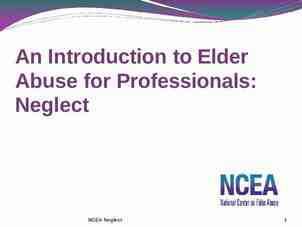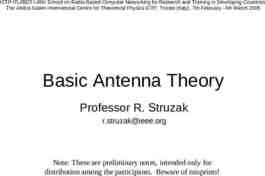WIDE RANGE ACHIEVEMENT TEST 4 (WRAT4) and Standardized Administration
34 Slides1.79 MB
WIDE RANGE ACHIEVEMENT TEST 4 (WRAT4) and Standardized Administration of the Woodcock-Johnson III Claudette Ward-Konovalov
Description of WRAT4 Norm-referenced achievement test that measures the basic academic skills of word reading, sentence comprehension, spelling, and math computation Also called a “quick and dirty” test of achievement
WRAT-4: Brief History Since first published, there have been several revisions WRAT-3 - 1993 WRAT-4 – 2006 Over these years, it’s popularity among users is attributed to its ease of administration, scoring, and provision of a significant amount of information gained through a brief investment of testing time.
WRAT-4: Updates To increase strength and usefulness in the areas of assessment and assistance in these categories (grades K-12), the WRAT4 is enhanced by the addition of gradebased norms. Thus, the age range of the WRAT-4 is 5-94 years of age. Furthermore, theres a new measure of reading achievement: Sentence Comprehension (subtest)
WRAT-4: Administration Alternate forms of the test, designated blue form and green form Can be used interchangeably with comparable results, allowing for retesting within a short period of time to prevent the potential practice effects of repeating the same items. The alternative forms can be administered together in a single examination.
WRAT-4: Administration/Time 1. 2. Administration - Time Approximately 15-25 minutes for individuals 5-7 years old. Approximately 35-45 minutes for those 8 years or older Administration of test usually done individually; specific subtests can be administered in groups Math computation and Spelling
WRAT-4: Four Subtests Word Reading Sentence Completion Spelling Math Computation WRAT also yields a Reading Composite score, obtained by combining the Word Reading and Sentence Comprehension standard scores
Word Reading Measures letter and word decoding Made up of two sections Part 1: Letter Reading, which consists of 15 letters Part 2: Word Reading, which consists of 55 words
Word Reading Administration Procedures Ages 7 or younger: Administer Part 1 first, followed by Part 2 Discontinue testing after 10 consecutive incorrect responses Ages 8 or older: Administer Part 2 first. Discontinue after 10 consecutive incorrect responses (10 Rule). If the participant has correctly answered 5 items on the Word Reading section before meeting discontinue criterion, do not administer Letter Reading Section. If the participant did not answer at least 5 items correct on the Word Reading, then administer Letter Reading. (5 Rule)
Sentence Comprehension Measures an individual’s ability to gain meaning form words and to comprehend ideas and information contained in sentences through the use of a modified cloze technique. Contains 50 items
Sentence Comprehension Administration Procedure Determining the Starting Point: a table on the front page of the test form lists the ranges of Part 2 (Word Reading) raw scores, the starting point corresponding to each range, and the sample items to be administered. Should only be administered to those who obtained a score of 5 on Part 2 Participant must be at least 6 years old or in Grade 1 Alternate procedure: start at item 1 and continue until he/she responds incorrectly to 7 consecutive items. Single word responses are highly encouraged
Sentence Comprehension Administration Procedures If the participant does not answer the first 5 items correctly, test backwards from the starting item until s/he obtains 5 consecutive correct answers Then return to the last item administered before starting to test backwards and administer the next item. Continue testing until the participant answers 7 consecutive items incorrectly or completes item 50.
Sentence Comprehension Administration of Sample Items Although there are a given amount of sample items for each starting point, you can give more if the participant needs more practice. Sample items may be given as many times as the participant needs until they understand the task.
Spelling Measures an individual’s ability to encode sounds into written form through the use of a dictated spelling format containing both letters and words Two parts Part 1: Letter Writing, which consists of name writing and 13 dictated letters Part 2: Spelling, which consists of 42 words. Administration Issues Pronunciation of word before administered item Ask the participant to clarify any illegible words
Spelling Administration Procedures Ages 7 or younger: Administer Part 1 first then Part 2 Discontinue Part 2 after 10 consecutive spelling errors. Ages 8 or older: Administer Part 2 first Discontinue after 10 consecutive misspelled words. If the participant correctly spelled 5 items on the spelling section before meeting the discontinue criterion, skip the letter writing section.
Math Computations Measures an individual’s ability to perform basic mathematics computations through counting, identifying numbers, solving simple oral problems, and calculating written mathematics problems. Two Sections: Part 1: Oral Math, which consists of 15 items Part 2: Math Computation, which consists of 40 items No calculators allowed!
Math Computation Administration Procedures Ages 7 or younger: Administer Part 1 followed by Part 2. Allow the participant 15 minutes to complete Part 2. Ages 8 or older: Administer Part 2 first. After 15 minutes, check the participants responses. If the participant does not have at least 5 correct responses, then administer Part 1.
Math Computation Example Solve for n 5n 7 42 N 24% of 97
Scoring of WRAT-4 Scoring done electronically with WRAT-4 Scoring Program (WRAT4-SP). Generates reports after handentry of raw subset scores from the WRAT4 Blue, Green, and Combined forms
WRAT-4: Strengths Ease of administration and scoring; takes very little time. Psychometrically sound Has excellent standardization Correlates well with other achievement and cognitive tests In clinical studies, separates people with learning or cognitive deficits from people without
WRAT-4: Weaknesses Only screens for strengths and weaknesses Does not measure other important achievement abilities. In later adolescent and adult years, WRAT-4 does not adequately measure skills of readers that are above-average or advanced. Only a small number of appropriate items for younger children being tested.
Woodcock-Johnson III Reminders: Do not assist students with prompts. Did you mean .? Repeats are not allowed. No accommodations are allowed as this negates the standardization of the administration. Exception: Large print test format
Preparation for Testing Arrange the setting: Quiet and comfortable room with good ventilation and lighting Table or flat surface with two comfortable chairs Examiner and subject must sit diagonally across from each other Setting up Testing Materials: Test Book and accompanying Test Record Booklet with Subject Response Booklet, sharpened pencils and erasers For tests requiring an audio presentation you will need an audio player, the audio recording and headphones For timed tests you will need a stopwatch or a digital watch
Preparation for Testing Establishing Rapport: Make sure the examinee feels at ease. If the person is not feeling well or is not responding appropriately, do not begin testing Begin testing session with a short period of conversation while completing the “identifying information” in the Test Record Call the person by name and smile frequently throughout testing Acknowledge effort by using comments like “good” or “fine” Encourage response even for items that are difficult E.g., Would you like to take a guess on that one? Be careful not to reveal whether a response is correct or incorrect.
Administration and Scoring Order of Administration: Best practice: In most cases, administer the test in the order that they appear in the easel test books beginning with the Standard Battery. You may begin with the Extended Battery. An examiner may also administer the tests in any order. The tests have been organized to alternate between different formats (e.g., timed versus untimed) to facilitate optimal attention and interest Time Requirements: Experienced examiners may take 45 to 60 minutes for tests in the Standard Battery and about 1.5 to 2 hours for tests in the Extended Battery Allow a reasonable amount of time for a person to respond, then suggest moving on to the next item Allow more time for an item if instructions allow it
Administration and Scoring Suggested Starting Points (SSP) Table from the Test Book and first page after tab provide special instructions/procedures and indicates where to begin SSP are determined by an estimate of the subject’s present ability level rather than by age or grade placement Using SSP with basal and ceiling levels helps to reduce unnecessary testing time Basal and Ceilings: Several tests require the establishment of a basal and a ceiling By not administering items that are extremely easy or difficult, the number of administered items is minimized and the subject’s tolerance for the testing situation is maximized The purpose of Basal and Ceiling is to limit the number of items administered
Administration and Scoring Meeting Basal and Ceiling Criteria: When required, criteria included in each test at the top of the Test Record (review criteria, not all are the same) Tests: Basal and Ceiling rules apply to each subtest (Tests: 1 – 11) Basal is item 1, ceiling is determined by cutoffs (Tests: 2,3,13 and 15) Basal is item 1, ceiling is 6 consecutive incorrect (Tests: 4,8, and 14) Basal is item 1, stop testing at limit (Tests: 6,12,16,18, and 20) Basal and ceiling rules apply to groups of items (Tests: 7,9, and 17) Basal is line 1, ceiling is line 25 (Test 10) Begin with intro, ceiling is determined by cutoffs or continuation instructions (Test 19)
Basal and Ceiling Testing should always be completed in units of completed pages. Administration should never begin and end in the middle of the page. Basal and Criteria are six or more consecutive items either passed or failed. Basal is the six lowest-numbered items correct. Ceiling is the six highest-numbered items established that are incorrect.
Administration and Scoring Subject Requests for Information Occasionally subjects will request other information, however, even after testing has been completed, never tell the person whether the specific answers are correct or incorrect If the subject requests information that cannot be supplied, answer: “I’m not supposed to help you with that” Examiner Queries: For certain responses, the Query Keys in the Test Book provide prompts designed to elicit another answer from the subject The examiner can tell the subject: E.g., “Tell me more about that”
Scoring Errors Although there are 6 correct here, the baseline is your lowest 6 consecutive correct.
Correct Administration Scoring Errors 31
Scoring Errors Correct Administration.
Grade Equivalent Continued One disadvantage of grade scores is that do not reflect the student’s ability. The grade score may cause problems when interpreting it. For example if a third grader receives a score of 6.0, this does not mean that they will be successful with sixth grade material. It shows us that this third grade student answered correctly a high percentage of items on a third grade test, that an average sixth grade student answered correctly on the third grade test as well.
Percentile Rank The subject’s percentile rank indicates the percentage of subjects in the selected segment of the norming sample who had scores the same as or lower than the subject’s score. Percentile ranks are useful for showing a person’s standing in the sample population. For example if a subject’s score percentile rank is 99.8, this means that the person’s performance was as good or better than that of 998 persons out of 1,000 in the reference group, or only 2 out of 1000 people would have a score as high or higher.







































